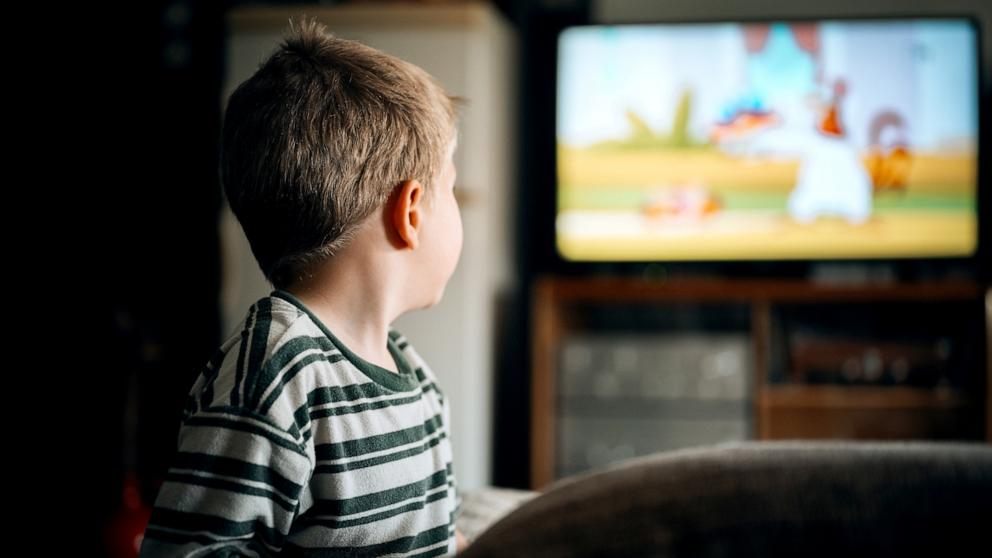
A growing number of parents are hitting rewind on the television their kids watch, opting for the nostalgia of shows from their childhoods.
These slower-paced classics are finding a new audience among today's toddlers as parents seek an antidote to overstimulating modern media. It is considered the "Slow TV" movement.
But the shift isn't just about nostalgia—it's backed by science. American pediatric experts suggest that the pacing of kids' media can significantly impact attention spans, emotional regulation and behavior.
Dr. Zabina Bhasin, a Los Angeles-based child and adolescent psychiatrist known as Dr. Zee, explains that fast-paced programming can overwhelm young children's developing brains, making it harder for them to focus and self-regulate.
"It may lead to shorter attention spans, heightened irritability and impulsive behaviors as their brains struggle to adjust to less stimulating environments," Dr. Zee told "Good Morning America."
Many parents have noticed these effects firsthand, including Hazel Tsukano, a content creator who shares her experience as a first-time mom on TikTok and Instagram (@hazeltsukano_). She frequently recommends low-stimulation shows for her followers and has made a conscious effort to be intentional about screen time for her toddler.
"I noticed hyperactivity, crying, irrational behavior and even aggression," she told "GMA" of her toddler's behavior after watching today's toddler television shows. "It was interfering with other activities like sleep, physical activity and social interaction." That realization led her to explore slower, gentler shows—and the difference was clear.
Fast-paced kids' shows are designed to hook young audiences with rapid scene changes, loud sound effects and fast-moving plots that keep children engaged.
While this may seem harmless, Dr. Zee warns that overstimulation can wire children's brains to crave constant novelty, making it harder for them to focus on quieter, sustained activities like independent play or reading.
"This can contribute to heightened anxiety, difficulty with transitions and challenges in self-soothing when overstimulation isn't present," she explained.
The good news? Parents are finding that a simple swap in screen time choices can make a noticeable difference.
"I started looking for shows with lower noise levels, fewer scene changes and more classic, educational storytelling," Hazel shared.
She gravitated toward Winnie the Pooh, Rugrats, DuckTales and Bluey, all of which offered a gentler approach to entertainment while still being engaging for her toddler.
Research supports what many parents are discovering firsthand: slower-paced media can help regulate children's emotions and improve overall behavior, according to Dr. Zee. She notes that studies have shown calmer shows can lower cortisol levels, helping young children feel more secure and balanced.
"Such programming fosters a sense of safety and stability, which is crucial for emotional development and self-regulation," she explained.
For parents looking to transition to calmer programming, Dr. Zee suggests focusing on shows with steady pacing, gentle transitions and themes that promote empathy, problem-solving and collaboration.
"Avoid programs with excessive sound effects, rapid scene changes, or themes centered on hyperactivity or conflict," she advised.
Some parent-approved slow TV favorites include:
For Hazel, these shows fit her criteria while allowing her to balance screen time in a way that works for her family.
"Every family's situation is unique," she explained in a recent Instagram video. "For us, allowing my child to watch shows provides that extra bit of rest, helps me attend virtual meetings, or meet deadlines. The key is to be thoughtful and intentional in the use of technology, always prioritizing your child's growth and development."
For toddlers accustomed to overstimulating shows, making the transition to calmer programming can take time. Dr. Zee suggests a gradual shift, incorporating more low-stimulation shows while also providing engaging, screen-free activities.
"Introduce calmer shows and offer alternatives like outdoor play or creative activities," she said. "Anything rushed will only create frustration for the child."
Hazel found that patience and consistency made all the difference. "In the end, the goal is to strike a balance that works for your family's unique circumstances while keeping your child's well-being and development in mind," she wrote on Instagram.
For parents who grew up on shows like Franklin and Winnie the Pooh, bringing these classics into their children's lives isn't just a sentimental choice—it's a way to create a more mindful, balanced approach to screen time.
And in a world that moves at lightning speed, sometimes slowing down is exactly what we all need.